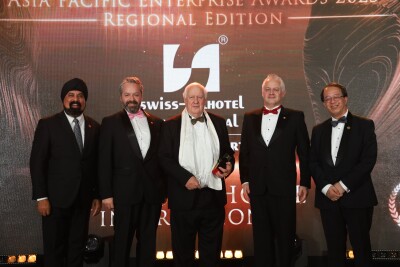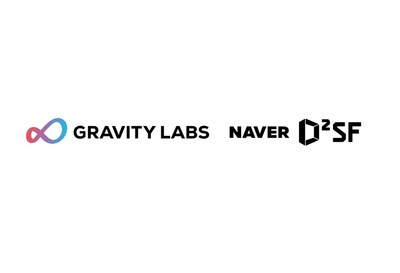SINGAPORE, Sept. 25, 2025 /PRNewswire/ — Omnichat, a leading omnichannel AI customer experience platform, recently held its Commerce Leadership Forum 2025 Series consecutively at the Meta Singapore and Meta Malaysia offices. Attendees benefited from enlightening discussions and insights shared by speakers from global social media giant Meta, premium automotive brand Volvo Car Malaysia, English and writing enrichment chain WRITERS AT WORK. The forums served as a premier platform to delve into the transformative impact of AI, data-driven insights, and the WhatsApp Business Platform on the landscape of customer engagement.
There is a fundamental shift in business-to-customer interaction, stating that messaging businesses is a way of life worldwide. This transformation is vividly illustrated by the recent statistics recorded in Meta’s 2023 and 2024 earnings: a staggering 1 billion people connect with a business account across Meta’s messaging services weekly. Vicky Yiu, APAC Strategic Partnership Manager of Meta highlighted the immense reach and potential of messaging as a primary channel for customer engagement. WhatsApp Business Platform is essential in the changing business landscape. Vicky also emphasised the growing importance of “WhatsApp Flows,” which allow businesses to create interactive, step-by-step experiences within the chat interface. These flows simplify data collection, appointment scheduling, and form completion, resulting in a more efficient and user-friendly experience.
According to the 2024 Business Messaging Usage Research by Kantar, 79% of online adults worldwide message with a business at least once a week, further emphasizing the importance of messaging. The significant number of daily conversations of 600 million between people and businesses on Meta’s technologies, as reported in Meta’s 2022-2023 earnings data, further highlights the importance of messaging. Albert Tiong, Regional Program Manager of Meta illustrated that “Meta Business Messaging leads to better results across the customer lifecycle compared to legacy channels.” From discovery and awareness to consideration, purchase, and re-engagement, two-way conversations drive improved marketing, sales, and support outcomes. Additionally, he noted that businesses utilizing paid messaging products have experienced a year-on-year doubling in numbers.
Patricia Yaw, Director of Marketing Operations and PR of Volvo Car Malaysia, is driving the brand’s digital transformation by proving that even legacy industries can evolve through conversational commerce. By adopting a centralised chat strategy, Volvo Car Malaysia now delivers a personalised customer experience entirely through WhatsApp. This strategic shift—from fragmented communication channels to a unified WhatsApp Business Platform—debuted during the brand’s much anticipated EX30 launch, which set new benchmarks for the brand, achieving its highest-ever test drive bookings, media impressions, and PR share of voice.
Using WhatsApp has demonstrated impressive performance metrics, including a remarkable 93% read rate. The click-through rate (CTR) is seven times higher than that of email, indicating a more effective engagement strategy. Additionally, the chatbot effectively manages one out of every four discovery questions, showcasing its efficiency in facilitating user inquiries.
As the conversation shifted from technology to outcomes, Patricia reflected on the impact of WhatsApp towards the two launches, “Choose your 90” launch event recorded 90% turnout rate, and also achieved the highest lead-to-opportunity conversion rate.
“We’ve seen firsthand how WhatsApp Business is transforming our ability to build stronger, more responsive relationships with customers,” she added. “Our WhatsApp campaigns during launches like the EX30 and Choose Your 90 significantly outperformed email, both in open and click-through rates, proving the importance of personalised, mobile-first messaging.”
Alan Chan, Founder & CEO of Omnichat showcased the transformational impact of AI-driven conversational commerce, explaining how businesses can harness automation and personalisation to optimise sales and enhance customer satisfaction.
“AI-powered conversational agents are revolutionising how businesses interact with customers,” said Alan. “Omni AI empowers businesses to create customised AI agents for various purposes, upload documents and resources to train them, and enable them to deliver faster and more accurate responses. From providing 24/7 instant support to sending hyper-personalised recommendations, AI enables companies to engage customers at every touchpoint efficiently and effectively.”
In essence, Omni AI is fundamentally changing the dynamics of business-customer interactions. These intelligent agents provide numerous benefits, including round-the-clock instant support and the ability to deliver highly tailored product recommendations. By effectively harnessing the power of AI, businesses can engage customers at every touchpoint throughout their journey, leading to increased efficiency and overall customer satisfaction.
Ang Kai Ning, HR & Finance Director of WRITERS AT WORK, highlighted how their education centre strategically leverages the WhatsApp Business Platform, facilitated by Omnichat, to enhance various aspects of their operations. Beyond basic messaging, WhatsApp has become a dynamic platform for interactive engagement, encompassing promotional messaging, efficient announcement scheduling, and responsive customer service.
“Omnichat’s integration with the WhatsApp Business Platform has been instrumental in transforming our communication strategy,” said Kai Ning. “We’ve seen exceptional results using WhatsApp broadcast to promote our webinars with our customers, achieving a 77.71% read rate and an 11.85% click-through rate, which translates to a fantastic 90% turnout.”
Furthermore, by implementing chatbot automation through Omnichat, WRITERS AT WORK has efficiently managed a substantial volume of customer interactions, handling 75,000 messages in the past year, with an impressive 99% of this communication occurring directly on WhatsApp. This demonstrates the pivotal role of the WhatsApp Business Platform, in conjunction with Omnichat’s capabilities, in streamlining communications, boosting engagement, and driving tangible results for WRITERS AT WORK.
This Commerce Leadership Forum 2025 Series served as a testament to the power of collaboration and innovation in driving business growth. By bringing together thought leaders and industry experts, the event inspired attendees to embrace new technologies, leverage data-driven insights, and reimagine customer engagement strategies for the digital age.

From left: Stanley Chan (VP of Sales at Omnichat), Alan Chan (Founder & CEO at Omnichat), Patricia Yaw (Director of Marketing Operations and PR at Volvo Car Malaysia), Albert Tiong (Regional Program Manager at Meta), Ang Kai Ning (HR & Finance Director at WRITERS AT WORK) and Vicky Yiu (APAC Strategic Partnership Manager at Meta)
About Omnichat
Omnichat is a leading provider of AI-powered conversational commerce solutions for the Asia-Pacific region. Uniquely positioned as both the sole Meta Business Partner and LINE Biz-Solutions Tech Partner in APAC with integrated WhatsApp, Facebook, Instagram, LINE, WeChat capabilities, Omnichat empowers brands to centralise communications, deliver personalised experiences, and drive digital transformation across their operations. Over 5,000 brands, including international retailers and enterprises, leverage Omnichat to optimise their customer journeys.
Website: https://www.omnichat.ai/sg
WhatsApp: https://wa.me/6586288791/?text=EnquiryForWhatsApp
LinkedIn: https://www.linkedin.com/company/omnichat-easychat/
Facebook: https://www.facebook.com/OmnichatAI
Media contacts:
(1) Maheswari Ganga
Marketing Manager, Omnichat
Email: mahes@omnichat.ai
Mobile: +6016 660 4254
(2) Lily Yeung
Regional Vice President, Marketing & Communications (GC & SEA), Omnichat
Email: lily.yeung@omnichat.ai
Mobile: +852 9803 5977

![[From left] Sarjit Singh, Senior Advisor, Deloitte & Touche LLP and APEA 2025 Jury member, Edward Faull, Senior Vice President - Technical Services and Projects, and SVP - Operations & Development - Vietnam and Central Asia, Swiss-Belhotel International, Gavin M. Faull, Chairman and President, Swiss-Belhotel International, Matthew Faull, Senior Vice President of E-commerce, Distribution & IT, Swiss-Belhotel International, Richard Tsang, President, Enterprise Asia.](https://laotiantimes.com/wp-content/uploads/2025/09/edward-gavin-and-matthew-accepts.jpg)
![]() https://www.swiss-belhotel.com/
https://www.swiss-belhotel.com/![]() https://www.linkedin.com/company/swiss-belhotel-international/
https://www.linkedin.com/company/swiss-belhotel-international/![]() https://www.facebook.com/swissbelhotel/
https://www.facebook.com/swissbelhotel/![]() https://www.instagram.com/swissbelhotel/
https://www.instagram.com/swissbelhotel/![]() https://www.swiss-belhotel.com/swiss-belhotel-international-wins-corporate-excellence-award
https://www.swiss-belhotel.com/swiss-belhotel-international-wins-corporate-excellence-award![]() Sign up for FREE. Stay connected with us on
Sign up for FREE. Stay connected with us on ![]() Facebook,
Facebook, ![]() Linkedin,
Linkedin, ![]() Instagram, and
Instagram, and ![]() TikTok for the latest updates and exclusive benefits. Visit
TikTok for the latest updates and exclusive benefits. Visit ![]() swiss-belhotel.com for more information.
swiss-belhotel.com for more information. 









